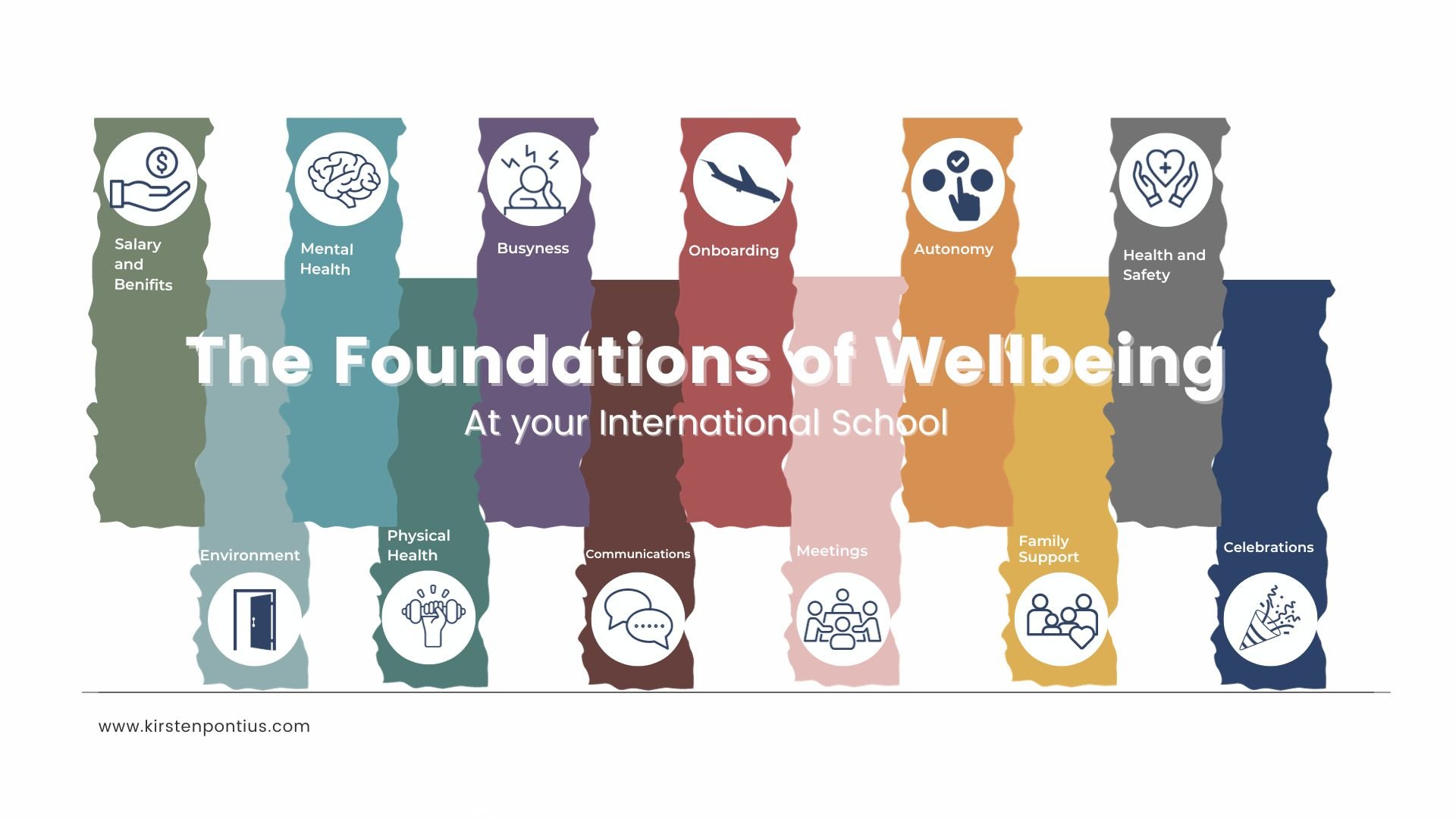Holistic Wellbeing at Your International School
In my 15 years of living abroad and working closely with educators, I've had the privilege of supporting hundreds in their journey towards improved wellbeing. Despite this, a persistent barrier hinders their ability to heal and thrive completely.
Teachers grapple with maintaining a healthy diet without access to affordable fresh food on campus. Educators struggle to establish a sleep routine when stress about workload keeps them awake at night. The fast-paced environment impedes staff from building meaningful relationships and a sense of belonging with students and colleagues. And often, the lack of awareness about safety procedures adds to the stress, hindering teachers from feeling at ease.
In various aspects of teachers' lives, a common roadblock emerges—a need for support and a system that propels them toward their full potential.
The foundational elements crucial for uplifting teachers and staff, fostering their wellbeing, are surprisingly simple. Many of these changes can be implemented immediately, offering tangible benefits.
Just as the human body relies on interconnected systems, a school's wellbeing elements must work cohesively to create a healthy community body.
Over the years, I've encountered numerous reasons schools hesitate to invest in the wellbeing of their community. Whether it's the belief that teachers are doing fine or more pressing matters take precedence, these reasons fall short. Investing in teacher wellbeing is not just a luxury but a necessity with far-reaching impacts.
Countless studies highlight the correlation between teacher wellbeing and student outcomes, both academically and personally. A recent literature review spanning 44 countries and involving over 75,000 teachers underscores the undeniable connection.
Neglecting teacher wellbeing means overlooking a crucial piece of the puzzle when striving for student wellbeing.
True wellbeing transcends mere prescriptions; it involves cultivating a culture of wellness within the school. This not only enhances the working environment but also contributes to the bottom line.
Consider the financial perspective—around 100% of one year's employee salary is spent on recruiting, off-boarding, and onboarding a replacement when a staff member departs. Investing in teacher and staff wellbeing significantly reduces this recruitment expense.
Studies show that healthy employees are approximately 3.5 times more productive, and happier individuals are more productive. Adequate sleep further improves efficiency and performance.
The toll of stress on productivity is evident, with 70% of employees losing at least an hour of productive work per week due to stress. The return on investment for wellbeing initiatives, encompassing lower absenteeism, reduced healthcare costs, increased productivity, and improved performance, is estimated at two to five times.
Globally, international schools face losses in productivity, talent, and effectiveness when individuals don't feel well.
It's time to shift from temporary fixes to addressing root causes effectively. As a health advocate and professional, I've integrated my knowledge of foundational health elements with insights into the challenges of international school careers. The result is 12 focal points designed to elevate any international school to a level of wellbeing that enables everyone to thrive.
In the intricate ecosystem of every educational institution, strengths and gaps exist in the support system for teachers' well-being. The right approach involves identifying the strengths, celebrating them, acknowledging the existing gaps, and directing focused attention to those areas. It's imperative to recognize that well-being is a collective effort, encompassing the entire community, to orchestrate a transformative shift in the culture of your international school.

